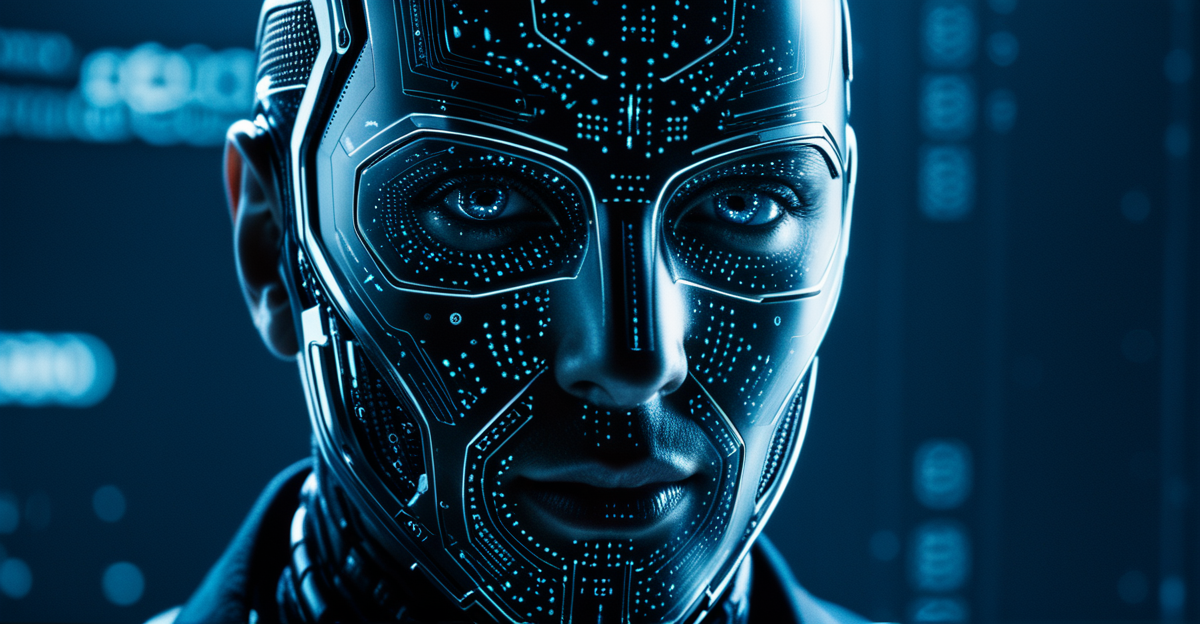The Growing Role of AI in Modern Cybersecurity
AI integration has become indispensable as cybersecurity threats evolve in complexity and scale. Traditional methods struggle to keep pace, driving the adoption of artificial intelligence in cybersecurity as a critical advancement. Today’s cyber attacks are more sophisticated, often involving automated bots, polymorphic malware, and targeted phishing campaigns that require rapid, adaptive responses beyond manual analysis.
Current cybersecurity advancements heavily feature AI-powered tools, with many organizations deploying machine learning models to detect anomalies and predict threats proactively. According to industry data, over 70% of cybersecurity firms now utilize AI-based solutions, reflecting a significant surge in AI cybersecurity trends. This integration allows systems to continuously learn from new data, effectively improving detection rates and reducing incident response times.
In parallel : How Will AI Innovations Reshape the UK’s Online Privacy Landscape?
AI’s contribution goes beyond detection: it enables intelligent automation, drastically minimizing human error while enhancing scalability. Companies benefit from AI’s ability to analyze massive volumes of security logs swiftly, a task impossible for conventional systems. As cyber threats intensify, the role of AI in cybersecurity only grows, marking a paradigm shift toward smarter, faster, and more efficient defense mechanisms.
Core AI Technologies Safeguarding Digital Security
Artificial intelligence in cybersecurity relies heavily on several core technologies that together form a robust defense framework. Among these, machine learning is foundational. It enables systems to learn from vast datasets of network traffic and historical threats, distinguishing malicious activity from normal behavior. Machine learning’s adaptability makes it essential for detecting evolving cyber threats.
Also read : How is UK technology influencing the future of education?
Deep learning, a specialized subset of machine learning, employs multilayered neural networks to analyze complex patterns more deeply. In cybersecurity, deep learning excels in malware analysis and identifying subtle intrusion attempts that simpler models might miss. This heightened sensitivity improves detection rates, crucial as attackers use increasingly stealthy techniques.
Another vital AI technology in cybersecurity is natural language processing (NLP). NLP helps analyze unstructured data such as emails and threat reports, facilitating automated phishing detection and real-time sentiment analysis to assess the risk of social engineering attacks. By processing human language, NLP enhances the cybersecurity system’s understanding of context and intent.
Automation powered by these AI technologies drives predictive analytics, enabling organizations to anticipate attacks before they occur. Predictive models analyze emerging trends and patterns to flag potential threats proactively. Together, machine learning, deep learning, and NLP represent the cutting edge of AI technologies in cybersecurity, delivering more intelligent and dynamic protection.
Real-World Applications of AI in Threat Detection and Response
Real-world AI-powered threat detection transforms how organizations identify and respond to cyber threats. AI systems analyze vast volumes of data in real time, spotting unusual patterns that signal attacks missed by traditional methods. For example, machine learning models continuously monitor network traffic to detect anomalies indicating malware or intrusion attempts.
Cybersecurity incident response leverages AI automation to accelerate containment and remediation. When a threat is detected, AI-driven tools can isolate affected systems instantly, minimizing damage. This rapid response is critical against fast-moving cyber threats where manual intervention may be too slow.
AI cyber defense examples include advanced threat hunting platforms that use deep learning to dissect malware behavior. These platforms also incorporate natural language processing to evaluate threat intelligence reports, improving detection accuracy. Automating these processes reduces false positives and frees security teams to focus on complex investigations.
Overall, AI-powered tools enhance threat visibility and response efficiency, enabling cybersecurity teams to stay ahead of emerging attacks. This practical deployment of AI in cybersecurity underscores its vital role within modern defense strategies.
Benefits of AI in Strengthening Cyber Defense
Artificial intelligence in cybersecurity delivers several critical benefits that enhance overall protection. First, AI threat analysis significantly improves detection accuracy and speed. By autonomously scanning vast datasets and identifying subtle anomalies, AI reduces the risk of missing emerging malware or intrusion attempts that traditional methods might overlook.
Another advantage lies in reducing false positives. AI cybersecurity tools apply advanced pattern recognition to differentiate genuine threats from benign activity, ensuring security teams focus their efforts effectively. This streamlined resource allocation not only boosts operational efficiency but also minimizes alert fatigue among analysts.
Adaptive defense mechanisms represent a further AI cybersecurity benefit. Machine learning models evolve continuously by learning from new attack vectors and environmental changes. This adaptability enables defenses to stay robust against innovative cyber threats, supporting proactive rather than reactive security postures.
In summary, AI cybersecurity benefits revolve around enhanced threat identification, faster incident handling, and smarter use of human and technological resources. These improvements contribute directly to improved security outcomes by enabling organizations to anticipate, detect, and respond to cyber threats with greater precision and agility.
Challenges and Limitations of AI in Cybersecurity
Artificial intelligence in cybersecurity faces significant challenges and limitations that impact its effectiveness. One primary concern is data quality and algorithmic bias. AI models depend on training data, so if datasets are incomplete or biased, their decisions may reflect inaccuracies or unfair outcomes. For example, biased data could cause an AI system to overlook specific types of cyber threats or generate more false positives.
Another critical challenge involves adversarial attacks targeting AI models themselves. Cybercriminals can manipulate inputs to deceive AI-driven defenses, potentially causing misclassification of malicious behavior as benign. This vulnerability underlines inherent cybersecurity AI limitations and the necessity for robust model hardening techniques to maintain trustworthiness.
Transparency and trust are further issues. Many AI models, particularly deep learning systems, act as “black boxes,” making it difficult for human analysts to understand their decision processes. This opacity complicates auditing and compliance, reducing confidence in AI-driven cybersecurity solutions.
Addressing these challenges requires ongoing research into bias mitigation, adversarial resilience, and explainable AI methods. While AI cybersecurity challenges remain, awareness and targeted solutions are essential to harness artificial intelligence in cybersecurity more safely and effectively.
The Future of AI in Cybersecurity: Trends and Predictions
Artificial intelligence in cybersecurity is poised for transformative growth, addressing emerging cyber threats with increasingly sophisticated solutions. Experts predict a surge in AI trends in security, particularly the expansion of explainable AI, which seeks to enhance transparency and trust by making AI decision processes clearer to human analysts. This shift aims to overcome current challenges linked to “black box” models.
Innovation will also focus on integrating AI with ethical considerations, ensuring that automated responses align with legal and moral standards while respecting privacy. Emerging AI algorithms will combine enhanced predictive analytics with real-time threat intelligence, enabling faster, more precise identification and mitigation of novel attack vectors.
Furthermore, the future of AI in cybersecurity includes wider adoption of autonomous systems capable of managing entire defensive operations with minimal human intervention. These systems will continuously learn to counter adaptive adversaries, reflecting a persistent AI cybersecurity evolution.
In summary, upcoming AI trends in security emphasize transparency, ethical use, and robust autonomous defense, helping organizations stay ahead of ever-changing cyber threats. As cybercriminal tactics grow more complex, these advancements will be essential to maintaining resilient digital security frameworks powered by artificial intelligence in cybersecurity.



